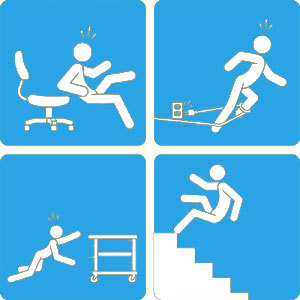
When was the last time you reviewed your company’s safety checklist? Or, better yet, does your company have a safety checklist? Between 2010-2012, it was estimated that employee injuries had an economic cost of $10.9 billion in New York.
Mobile Health provides testing services nationwide at our occupational health locations, and we stand by the old adage, “better safe than sorry.” If your organization wants to implement some proactive safety measures, contact us below for a free consultation to find out what Mobile Health can do for you.
Since many of these injuries are not new and unique, having a standard workplace safety checklist is a great way to ensure a safe work environment. Here are a few areas to remember when developing your checklist:
Tools and parts kept in proper storage areas
Difficult to reach parts or unorganized tools can contribute to hand injuries or even damage from falling items that are out of reach. Try to organize work tools in clearly labeled containers within a reasonable reach distance.
Power cords tied, not left scattered across the floor
A temporary fix of extending a power cord can easily turn into a permanent unsafe solution. Trips and falls are serious injuries, especially when falling onto other workplace furniture and objects. Make sure you run all power cables safely, and if necessary, call a professional electrician for help.
Employees operate vehicles in a safe manner
If your employees drive, it is very important to train them on your driving expectations. Establish a training program to encourage seat belt use, following the speed limit, and extraordinary focus on driving safely.
First aid kit adequately supplied
You might already have a first-aid kit, but has it been reviewed recently? Medication and ointments expire, and a dusty and dirty case may make using it difficult. Keep your first-aid kit in a noticeable location (aka: not under the sink or bathroom) and frequently review it for proper materials.
Employees apply sun protection and drink plenty of fluids during hot weather
During cold weather, employees dress in layers to prevent hypothermia
If you have outdoor employees, make sure you review protection against natural elements. All it takes it one day of extreme cold or extreme sun to cause injury and a few sick days – along with a possible worker’s compensation bill.
Respirator fit tests are done in a timely manner, not just when the audit comes.
Respirator fit testing may not be very glamorous, but they’re necessary for safety. It’s easy to forget to give your employees a respirator fit test because it seems like a such a small thing. However, if a respirator doesn’t fit, it can’t do its job, and neither can workers. Make sure the necessary staff wear a respirator that fits, and they’ll be safer. Also, consider working on-site respirator fit tests into your safety plan to ensure that everyone gets tested, not just everyone who remembers.
Panic button within reach of front desk to alert police in the event of an emergency
If the worst should ever happen, make sure your front desk has the tools they need to protect themselves and co-workers. A panic-button might sound like a James Bond style gizmo, but many offices across the country have realized the benefit of a silent and discreet call to security as an important tool of workplace safety.
Doors have the necessary signage such as “Leads To Basement”, “Storage Room”, “Exit”, etc.
In a complex office design, image a first responder arriving and having to figure out where to go. Are there signs pointing to key areas of the workplace? Or during a panic, will employees quickly and easily realize the appropriate path to take to safety?
Broom and dust pan used to pick up broken glass
A trivial thought, but when dealing with a broken glass or light bulb, do employees have access to a broom and dust pan? And are they specifically trained on using it instead of their hands?
Workstations, such as desks, set up and adjusted to meet the needs of individual users
It is important to realize that a 5ft 2in person will have a very different workstation need compared to a 6ft 2in person. Look into chair and table height adjustments as well and monitor heights to avoid neck injuries.
Emergency numbers posted throughout the workplace
An emergency contact sheet should include local emergency numbers but building management as well. And remember to include any neighbors or others with access to your workplace. Place this list in a centrally visible location available for all employees.
Curved mirrors at hallway intersections and concealed areas
Let your employees know what is around the corner with curved mirrors. This helps prevent blind sighted accidents and know where danger may lie without exposing themselves.
These are only some of the least through workplace safety items to include in your checklist. For more complete industry specific checklist, visit the New York State Insurance Fund website for free downloadable materials.
